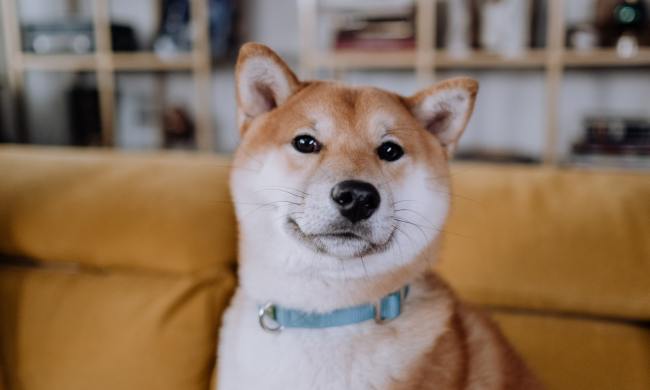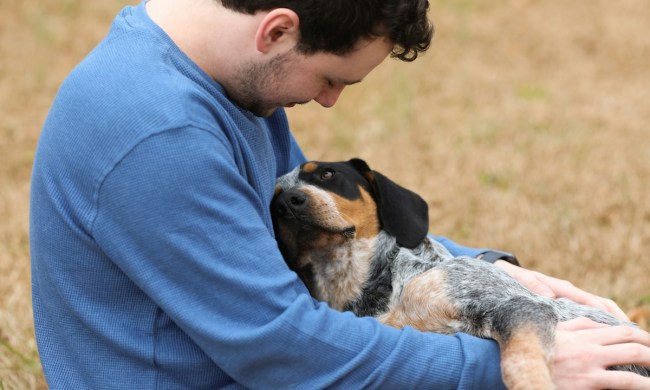There’s a lot you can say about dogs — they’re affectionate, loyal, protective, and sometimes, they do the most amusing things. Have you ever seen a puppy catch a glimpse of themselves in a mirror? It’s hilarious.
Reddit user mujohnt posted this adorable video of a puppy’s reaction to their own reflection and we can’t stop watching. (Or smiling — it’s super cute.)
This poor little pup is just wandering along, sniffing the wood floor (as you do), when all of a sudden, our four-legged friend is greeted by a stranger in the house (and this invader just so happens to look exactly the same). First, there’s shock, then perhaps a bit of fear as the confused puppy backs away from the intruder, then some playfulness, some jumping, and just a bit of growling. And when the puppy finally gets close enough to sniff the newcomer (or, uh, the glass in front of their face), the little adventurer doesn’t seem to understand what’s going on.
We get it, buddy. It’s confusing.
Can dogs see their own reflections?
When humans get startled by our reflections in a mirror we didn’t realize was there, we catch on pretty quick. But do dogs ever figure out they’re looking at their own image (and there’s not, in fact, a stranger in the home who just might try to steal all the treats and toys)?
To answer this question, Gordon Gallup Jr. developed the mirror test in 1970. Essentially, it tests the self-awareness of all animals. First, the animal is marked with an odorless dye, and then the animal is observed to see how they react. If the animal realizes the dye is on their own body, they might turn, adjust themselves to get a better view, or poke or prod the mark on their own body while watching what’s happening in the mirror. Chimpanzees, dolphins, elephants, and humans (over the age of two), for example, have passed the test. Dogs have not.
Instead, much like one-year-old children, dogs react with fear, curiosity, or apathy.
Dogs do have some self-awareness though
This doesn’t mean dogs are completely unaware of themselves. Another study found that they can both recognize their own personal odor (which makes sense — dogs rely on their sense of smell a lot more than people do) and recall personal memories. But since a mirror is a completely visual experience, dogs don’t have the capacity to recognize themselves in that instance.
So does this mean all pups are doomed to be startled every time they see their own reflection? No. You’ve probably seen it with your own dog — eventually, the novelty of the mirror wears off and they go about their business (someone has to sniff those floors after all). This is called habituation, and all animals do it: it’s when they stop responding to a previously arousing stimulus. While dogs still don’t recognize themselves, they recognize that the experience is nothing new and is actually perfectly normal.
But until that happens? Feel free to enjoy adorable videos of puppies catching sight of their own reflection.


